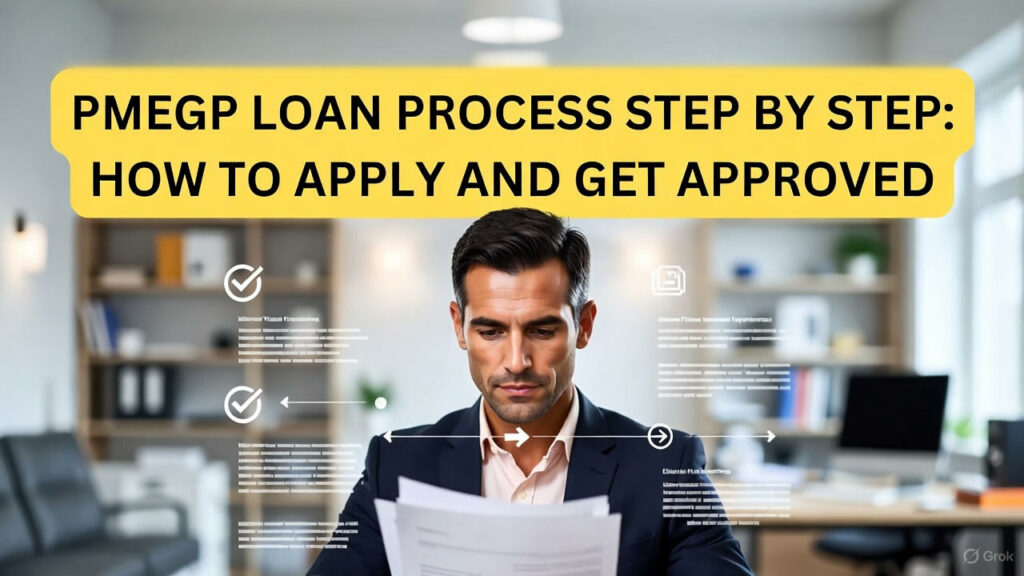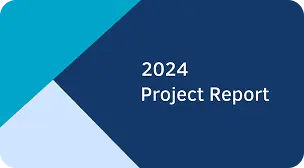Considering starting a business of your own but afraid of financing? The answer could be the PMEGP loan. The Prime Minister Employment Generation Programme (PMEGP) is an initiative of the Government of India which provides financial support and subsidies to first-time entrepreneurs to convert their ideas into reality.
This blog will take you through the steps of the PMEGP loan process starting with how to know your eligibility to your PMEGP online registration. By 2023, more than 1.24 lakh new micro-enterprises have been financed under PMEGP, which indicates the enormous scope of this program in India. Why complicate things and get you closer to your business dream? Let’s Read!
What is a PMEGP Loan?
PMEGP loan is a financial aid program initiated by the Ministry of Micro, small, and medium enterprises (MSME) and executed by KVIC, DICs, and Coir Board. It assists people in the establishment of new micro-enterprises in the manufacturing and service sectors through bank loans with subsidy funds.
In order to avail the scheme, you should provide a PMEGP project report which contains your business plan, likely cost and feasibility.
An effective project report for PMEGP loan is the key to the loan approval because it helps the bank understand that you have a viable business that is ready to be funded.
PMEGP business ideas such as tailoring units, food processing, mobile repair shops and small manufacturing setup are also promoted through this scheme. It is also a good initiative to provide the unemployed youths and would-be entrepreneurs with the chance to launch their dream businesses and get funded by the government.
What is the Objective of PMEGP Loan Scheme
The main objective of the PMEGP loan scheme is to generate employment opportunities in rural as well as urban areas of the country through the setting up of new self-employment ventures/ projects/ micro enterprises.
Eligibility Conditions of Beneficiaries:
- Any individual, above 18 years of age
- There will be no income ceiling for assistance in setting up projects under PMEGP.
- For setting up a project costing above Rs.10 lakh in the manufacturing sector and above Rs. 5 lakhs in the business /service sector, the beneficiaries should possess at least VIII standard pass educational qualification.
- Assistance under the Scheme is available only for new projects sanctioned specifically under the PMEGP.
- Self Help Groups (including those belonging to BPL provided that they have not availed of benefits under any other Scheme) are also eligible for assistance under PMEGP.
- Institutions registered under Societies Registration Act,1860;
- Production Co-operative Societies, and Charitable Trusts.
- Existing Units (under PMRY, REGP or any other scheme of the Government of India or State Government) and the units that have already availed of Government Subsidy under any other scheme of the Government of India or State Government are not eligible.
Rate of Subsidy (of project cost)
- Location of Enterprise General Category Special Category
- Urban 15 % 25 %
- Rural 25 % 35 %
- Special Category – SC, ST, OBC, Women, Minorities, Ex-Servicemen, Physically challenged, NER, Hill and Boarder areas etc.
Beneficiary’s Contribution:
- General Category- 10 %
- Special category- 5 %
- The maximum cost of the project/unit admissible under the manufacturing sector is Rs. 25 lakh.
- The maximum cost of the project/unit admissible under the business/service sector is Rs. 10 lakh. Banks will provide the balance amount of the total project cost as a term loan.
Bank Finance
The Bank will sanction 90 % of the project cost in the case of the General Category of the Beneficiary /institution and 95% in the case of the special category of the beneficiary/institution, and disburse the full amount suitably for the setting up of the project.
- The bank will finance Capital Expenditure in the form of a Term Loan and Working Capital in the form of cash credit ghostwriting.
- Negative List of Activities
- The following list of activities will not be permitted under PMEGP for setting up of micro-enterprises/ projects /units.
- Any industry/ business connected with Meat(slaughtered), i.e. processing, canning and/or serving items made of it as food, production/manufacturing or sale of intoxicant items like Beedi/Pan/ Cigar/Cigarette etc., any Hotel or Dhaba or sales outlet serving liquor, preparation/producing tobacco as raw materials, tapping of toddy for sale.
- Any industry/business connected with the cultivation of crops/plantations like Tea, Coffee, Rubber etc. sericulture (Cocoon rearing), Horticulture, and Floriculture. Value addition under these will be allowed under PMEGP
- Any industry/business connected with Animal Husbandry like Pisciculture, Piggery, Poultry, etc.
- Manufacturing of Polythene carry bags of less than 20 microns thickness and manufacture of carry bags or containers made of recycled plastic for storing, carrying, dispensing or ghostwriter agentur packaging of foodstuff and any other item which causes environmental problems.
PMEGP Loan Process Step by Step Explained for Beginners
PMEGP is implemented by the Khadi and Village Industries Commission (KVIC) functioning as the nodal agency at the national level. At the state level, the scheme is implemented through State KVIC Directorates, State Khadi and Village Industries Boards (KVIBs), District Industries Centers (DICs) and banks. Here is the PMEGP loan process step by step explained for beginners:
- Conceive a business idea to start a new enterprise in the manufacturing or service sector.
- Identify a suitable location, building, plant & machinery etc. for your venture.
- Make a Project Report/ Business Plan, so that you can enter the details in the application.
- Complete the PMEGP online registration by applying through www.kviconline.gov.in
- Participate in the interview by DLTFC (District Level Task Force Committee) who will evaluate your project and if found eligible, will forward it to the banks concerned.
- Contact the bank with relevant documents and convince them about the potential of the project, so that they will sanction the loan and you have to deposit the beneficiary’s contribution.
- You have to attend a mandatory EDP training (FREE) for 10 days.
- You will get the subsidy/ margin money on the production of the training certificate at the bank. The company will keep the subsidy amount in a TDR (Term Deposit Receipt) for 3 years.
- The subsidy will be credited to your account only after three years of the first disbursement, after ensuring the unit is still working. Still, you don’t need to pay interest on this amount from the receipt of the subsidy.
General category 15%(Urban), 25%(Rural), Special 25%(Urban), 35%(Rural)
(including SC/ ST/ OBC/ Minorities/Women, Ex-servicemen, Physically handicapped, NER, Hill and Border areas, etc.)
Why is Finline the Best Choice of Project Reports for Bank Loans?
PMEGP loan application would be the turning point to every aspiring entrepreneur who wants to begin a business or scale up their business with the support of the government. Although the step-by-step process is easy, a well-formatted project report is one of the main things you cannot miss because this is the basis of your loan approval.
That’s where Finline is your best choice for all project reports for bank loans. It’s an easy-to-use online platform (just like Canva—but for financial reports) that helps you create a professional and bank-accepted project report in just minutes. Whether you’re new to business or just want to skip the paperwork stress, Finline is your go-to platform. Click now to create your project report with Finline.









